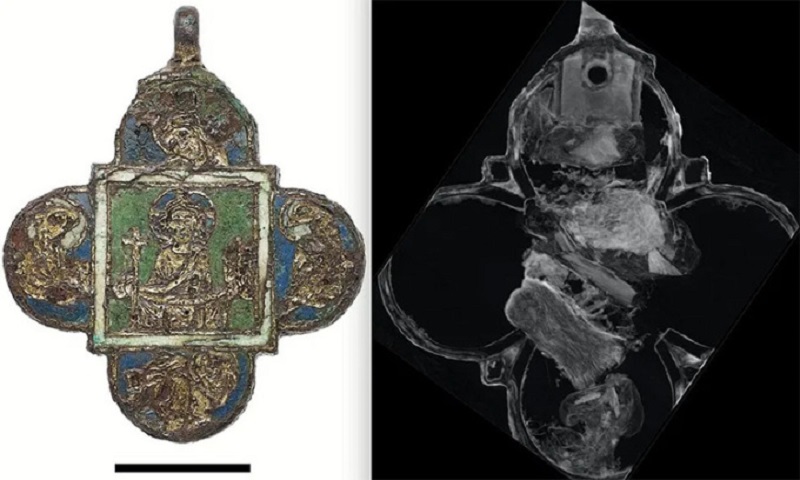Scientists discovered hidden objects in medieval pendants without opening the lid thanks to neutron tomography.

Neutron tomography reveals the interior of a medieval pendant. Photo: Sabine Steidl/LEIZA
A team of experts at the Leibniz Center for Archeology (LEIZA) at the Technical University of Munich (TUM) studied a gilded medieval pendant found in Mainz, Germany, in 2008. They believe the pendant contained something inside, but cannot be opened for fear of causing permanent damage to the 800-year-old artifact. Therefore, they used the non-invasive method of scanning neutron rays, Ancient Origins reported on January 12.
The gold-plated copper pendant is decorated on an enamel exterior with images of Jesus, the 4 evangelists, the Virgin Mary and 4 holy women. The team believes it originated from a workshop in Hildesheim, Lower Saxony.
The pendant is about 6 cm high, 6 cm wide and 1 cm thick. Matthais Heinzel, restorer at LEIZA, cleans the residue from this artifact after 500 hours of hard work.
Initially, the team used X-rays but could not see the organic composition of the pendant and had to switch to neutron scanning. Unlike X-rays, neutrons have the ability to penetrate metals and help show organic substances.
The team of experts conducted Neutron Tomography and Fast Gamma Activation Analysis (PGAA), discovering there were 5 separate packages made of silk and linen inside the pendant. Each package contained tiny bone fragments, likely belonging to someone revered as a saint.
During the restoration process, Heinzel also found a piece of string in the pendant’s eyelet. Upon closer inspection, scientists realized this piece of string was made of silk. “This is the first evidence that such pendants may have been worn around the neck with silk strings. Using neutron tomography at TUM, we were able to measure the thickness and distance between the strands inside the silk rope,” said Heinzel.
To date, scientists have only found three other similar bone containers. They are called phylactery – derived from the Greek term meaning to protect or keep safe. Ancient people carried them on their bodies, usually around their necks.
The pendant has now been handed over to the Cultural Heritage Department of the Mainz State Archaeological Service and is temporarily displayed in the exhibition “Aurea Magontia – Medieval Mainz” at the Mainz State Museum.


